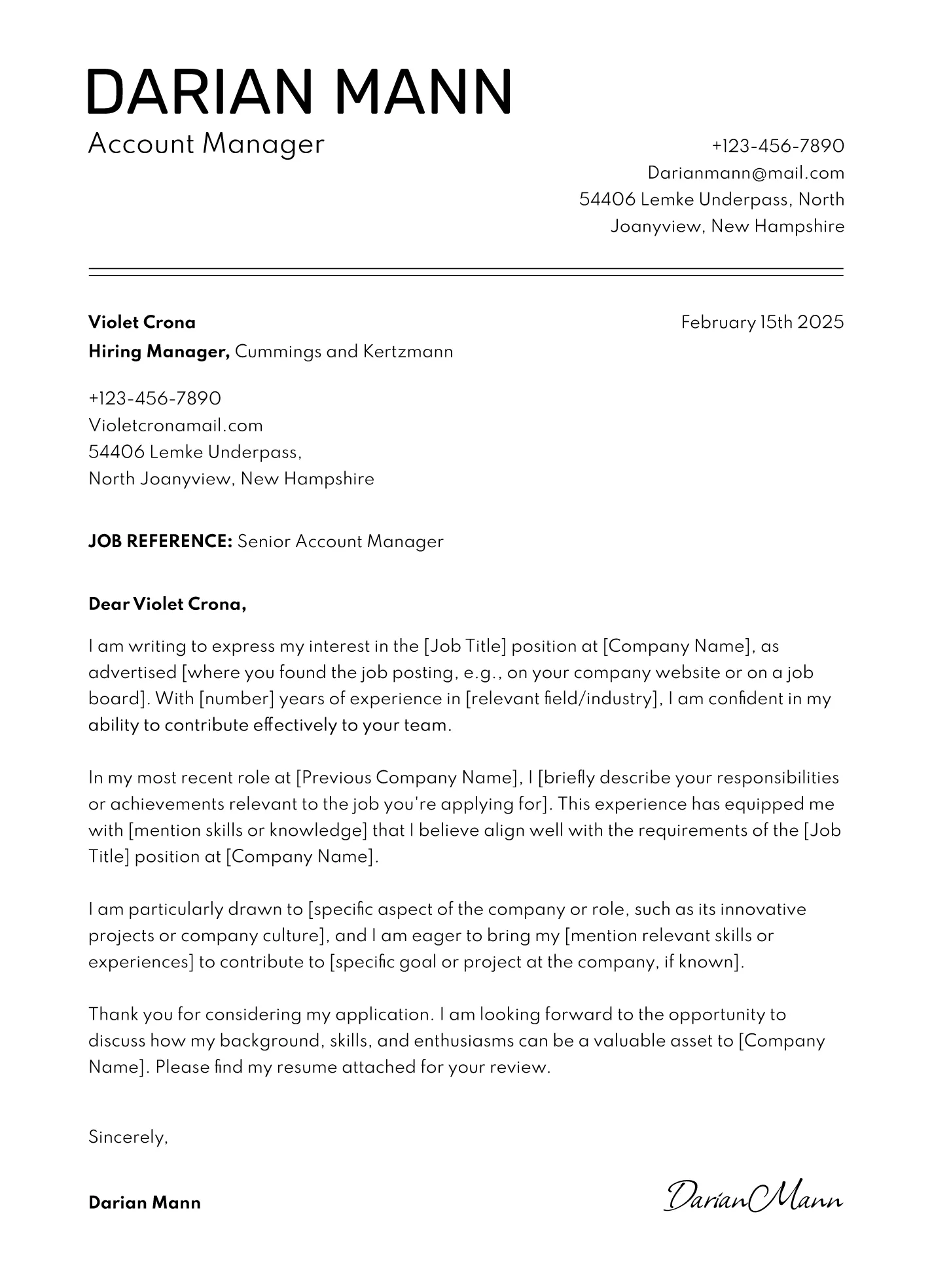What is a Cover Letter
A cover letter is a crucial document that accompanies your resume when you apply for a job. It serves as an introduction, a personal pitch, and an opportunity to expand on the information presented in your resume. Unlike the concise format of a resume, a cover letter allows you to showcase your personality, express your enthusiasm for the position, and demonstrate how your skills and experience align with the job requirements. It’s your chance to make a strong first impression and persuade the hiring manager to consider you for an interview. A well-crafted cover letter can significantly increase your chances of getting noticed and landing your dream job.
Why is a Cover Letter Important
In today’s competitive job market, a cover letter is more important than ever. While your resume provides a snapshot of your qualifications, a cover letter offers context and narrative. It allows you to explain why you’re interested in the specific role and company, and how your skills and experiences make you the perfect fit. Many hiring managers consider a cover letter as a key factor in evaluating candidates, as it reflects your communication skills, attention to detail, and genuine interest in the opportunity. A strong cover letter can set you apart from other applicants and demonstrate your professionalism and commitment to the job.
Key Elements of a Cover Letter
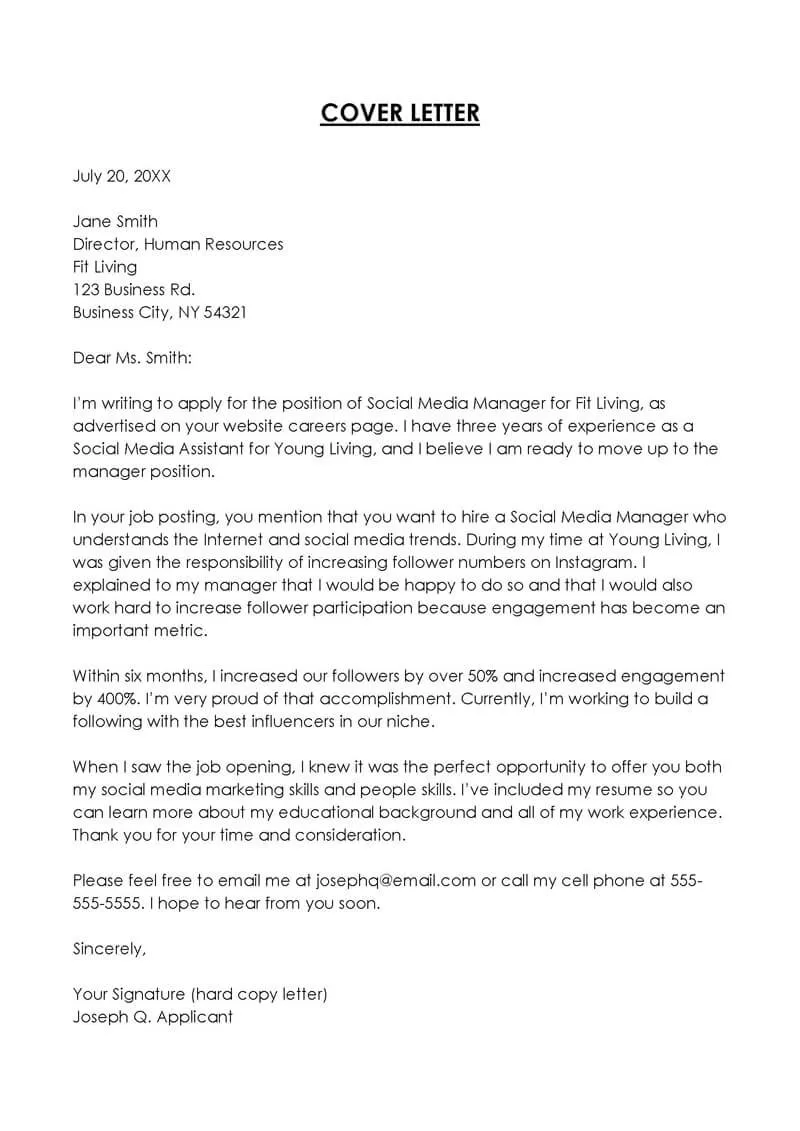
A compelling cover letter includes several key elements to effectively communicate your qualifications and interest in the job. These elements work together to create a cohesive and persuasive document. Understanding each component and how they fit together is crucial for crafting a cover letter that stands out to potential employers.
Your Contact Information
At the top of your cover letter, include your contact information. This typically includes your full name, phone number, email address, and optionally, your LinkedIn profile URL. Make sure your contact information is accurate and up-to-date. This ensures that the hiring manager can easily reach you if they are interested in your application. Maintain a professional email address.
Date and Recipient Information
Below your contact information, include the date of the letter. Then, provide the recipient’s information, which includes the hiring manager’s name, their title, the company name, and the company’s address. If you can’t find the hiring manager’s name, use a general title like “Hiring Manager.” It’s important to address the letter to a specific person whenever possible to show you’ve done your research.
Professional Greeting
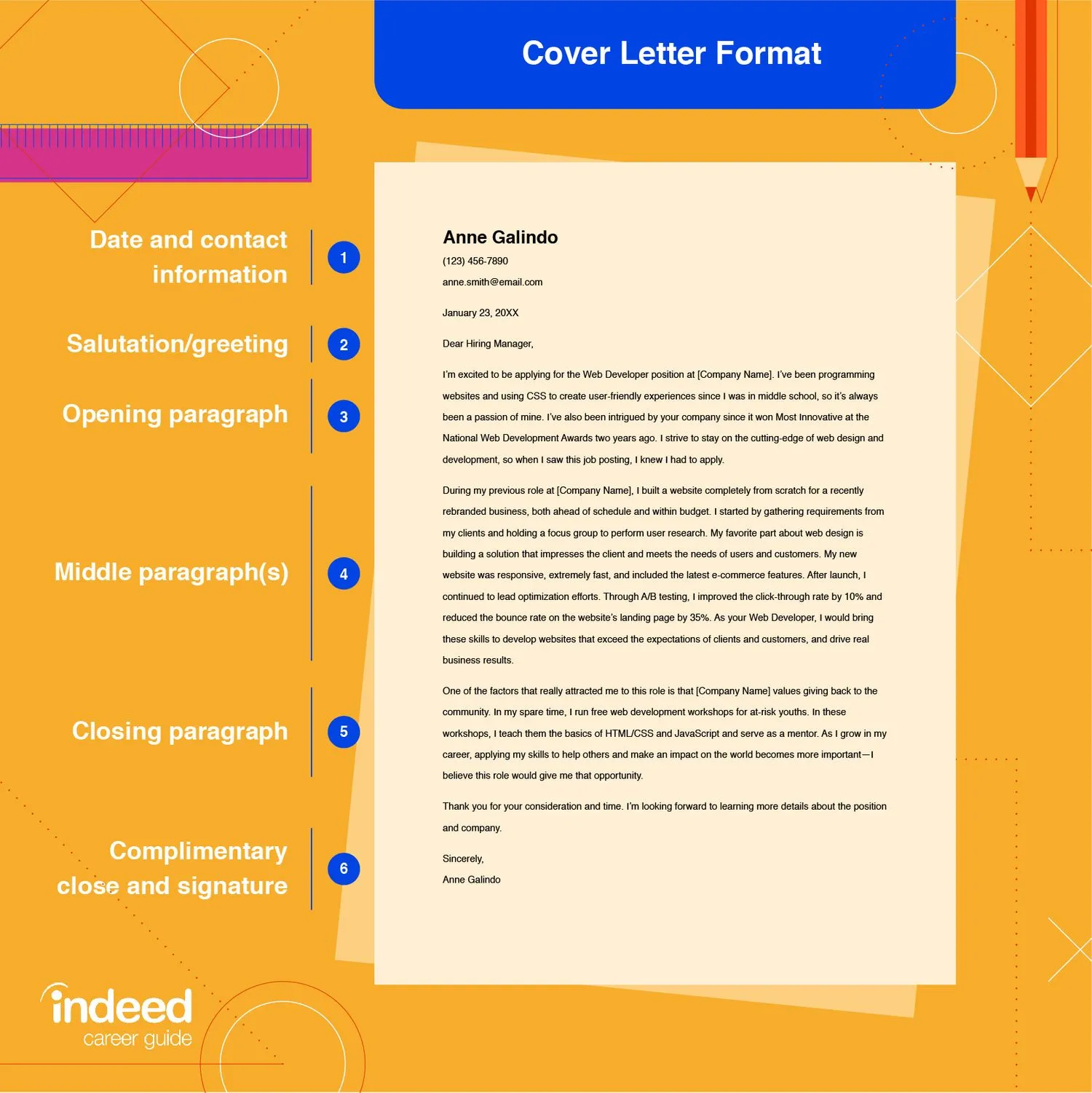
Start your cover letter with a professional greeting. The most common greeting is “Dear [Hiring Manager Name],” If you don’t know the name, use “Dear Hiring Manager” or “Dear [Company Name] Team.” Avoid generic greetings like “To Whom It May Concern,” as they lack personalization. A strong greeting sets the tone for a professional and engaging letter, showing respect for the recipient and indicating that you’ve tailored your letter to the specific job.
The Opening Paragraph
The opening paragraph is your chance to grab the reader’s attention. Clearly state the position you are applying for and how you learned about the opportunity. Briefly mention your most relevant skills or experiences and express your enthusiasm for the role and the company. This introduction should be concise, compelling, and immediately convey why you are a good fit for the job. The opening paragraph is the hook that draws the reader in and encourages them to continue reading your letter.
Highlight Your Skills and Experience
In the body of your cover letter, provide specific examples that highlight your skills and experience related to the job requirements. Explain how your past accomplishments and qualifications align with the company’s needs. Use action verbs to describe your contributions and focus on what you can bring to the role. Tailor this section to match the keywords and requirements mentioned in the job description. This section proves to the hiring manager that you possess the necessary skills and experiences to succeed.
Quantify Your Achievements
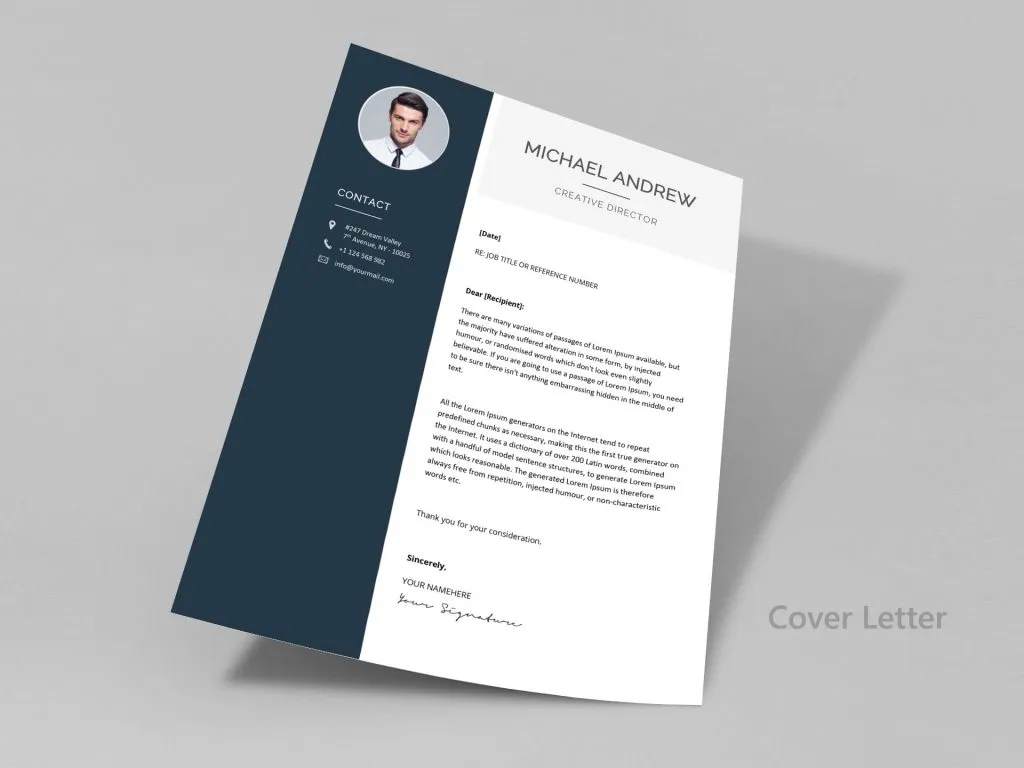
Whenever possible, quantify your achievements by using numbers and data. Instead of saying “Improved customer satisfaction,” say “Increased customer satisfaction by 15% through implementing a new feedback system.” Quantifying your accomplishments demonstrates the impact of your work and provides concrete evidence of your abilities. Metrics and data make your claims more credible and show the tangible results you’ve achieved in previous roles. This data gives the hiring manager an idea of your professional successes and what they can expect from you.
Express Enthusiasm and Company Research
Demonstrate your genuine interest in the company and the specific role. Conduct research on the company’s mission, values, and recent projects. Mention something that resonates with you and explain why you want to be a part of their team. This shows that you have taken the time to learn about the company and are genuinely interested in their success. This effort sets you apart from candidates who are applying for any job. It also indicates to the hiring manager you would be a good cultural fit.
The Closing Paragraph
In the closing paragraph, reiterate your interest in the position and summarize your key qualifications. Thank the hiring manager for their time and consideration. Keep the closing brief and to the point, and make sure it leaves a positive final impression. This is a great opportunity to reinforce your desire for the role and to solidify your candidacy.
Call to Action
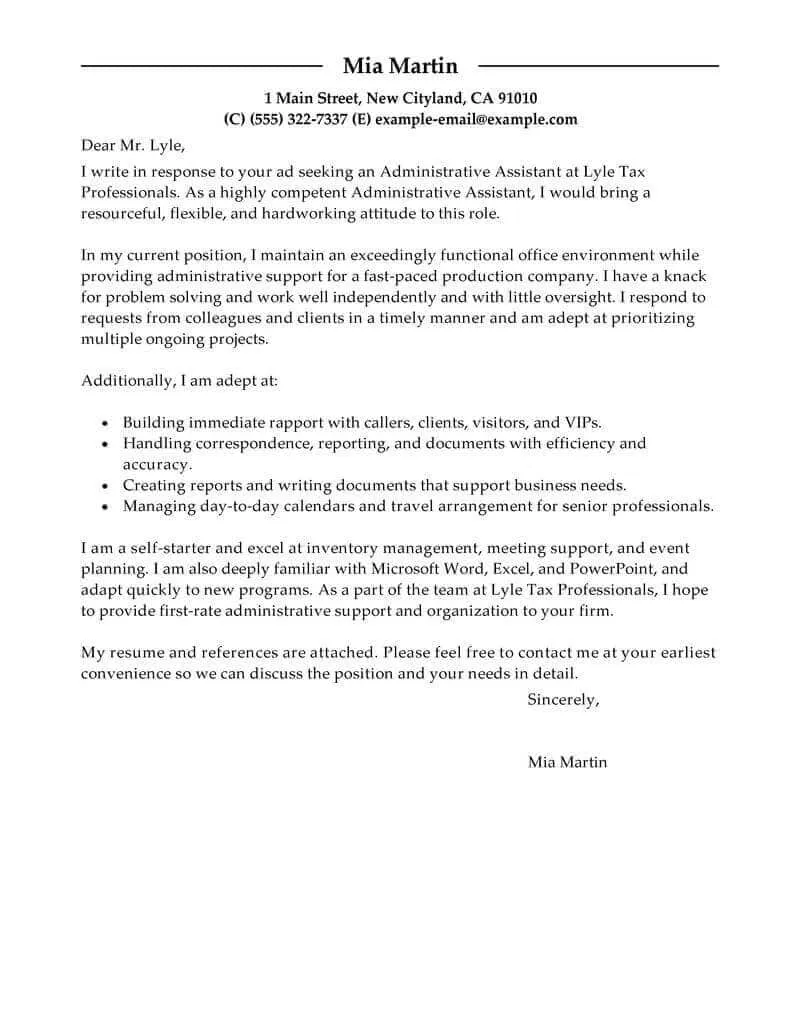
Include a clear call to action. Express your eagerness to discuss your qualifications further and indicate your availability for an interview. State that you are looking forward to hearing from them soon. This step shows initiative and makes it easy for the hiring manager to move forward in the hiring process. A clear call to action encourages the hiring manager to contact you.
Professional Closing
End your cover letter with a professional closing, such as “Sincerely,” “Regards,” or “Best regards.” Leave space for your signature if you are printing and mailing the letter. Then, type your full name below the closing. A professional closing completes your letter and reinforces the overall tone of your application. This helps create a positive and professional impression.
Proofread and Edit
Before submitting your cover letter, carefully proofread it for any errors in grammar, spelling, and punctuation. Use a grammar checker tool, and have someone else read your letter to catch any mistakes you may have missed. A polished cover letter reflects your attention to detail and professionalism. Errors can create a negative impression and undermine your qualifications. Take the time to ensure that your letter is free from any mistakes.
Cover Letter Format
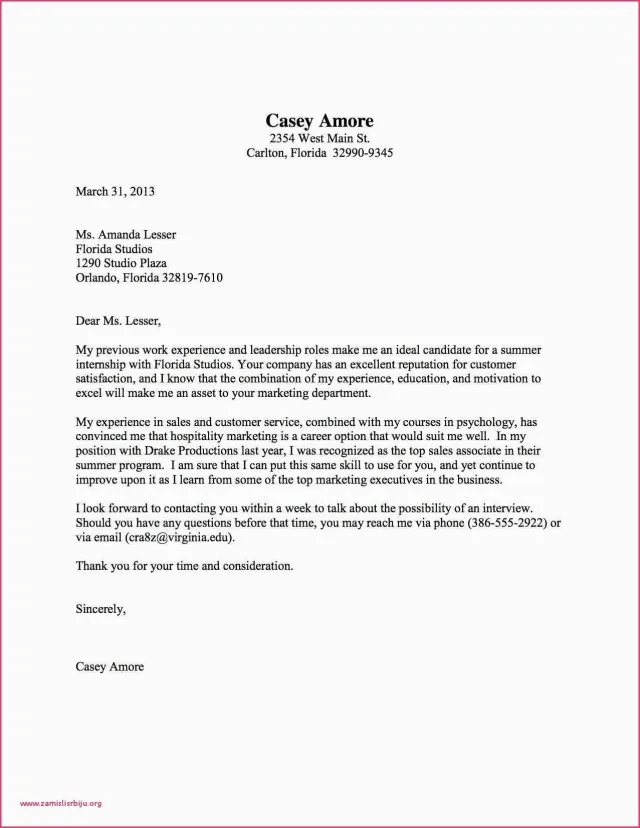
The format of your cover letter is as important as its content. A well-formatted letter is easy to read and visually appealing. Following specific guidelines ensures your letter looks professional and makes a positive impression on the reader. Proper formatting also demonstrates your organizational skills and attention to detail.
Font Selection and Size
Choose a professional and readable font, such as Times New Roman, Arial, or Calibri. Keep the font size between 10 and 12 points. Avoid using overly decorative or complex fonts, as they can be difficult to read. A clear font and size make your letter accessible and ensure that the reader can easily understand your message. These choices reflect your awareness of professional presentation.
Margins and Spacing
Set your margins to 1 inch on all sides. Use single-spacing within paragraphs and double-spacing between paragraphs. This creates a clean and organized layout that is easy on the eyes. Proper spacing and margins make your cover letter visually appealing and demonstrate your understanding of professional document presentation. A well-formatted cover letter shows you know how to present your ideas clearly.
Customizing Your Cover Letter
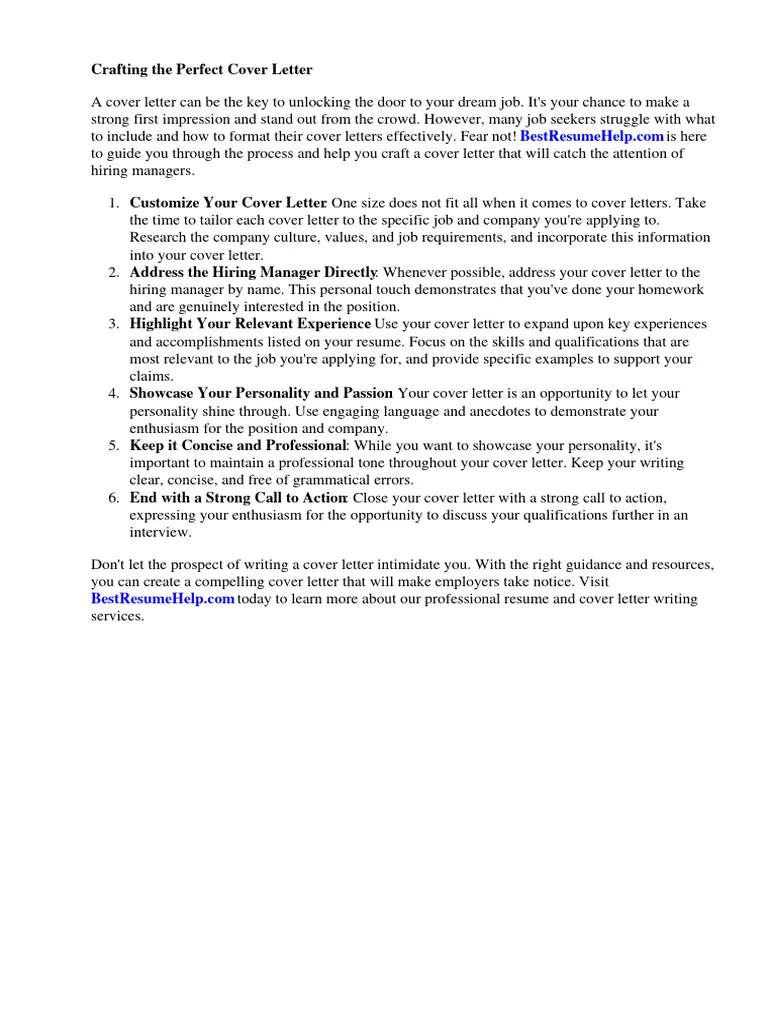
A generic cover letter is unlikely to impress a hiring manager. Customizing your cover letter for each job application is essential. This means tailoring your letter to the specific requirements of the role and the values of the company. It shows your genuine interest and demonstrates that you have taken the time to understand the position. This approach greatly increases your chances of securing an interview.
Tailoring to Specific Jobs
Carefully review the job description and identify the key skills and experiences the employer is seeking. Then, highlight the relevant experiences and qualifications that align with those requirements. Use keywords from the job description in your cover letter. This process demonstrates to the hiring manager that you possess the skills and experience they are looking for. Make sure that your cover letter is tailored to each specific role.
Keywords Optimization
Incorporate relevant keywords from the job description throughout your cover letter. This will help your application get noticed by applicant tracking systems (ATS) and hiring managers. Don’t just stuff keywords into your letter; use them naturally within the context of your sentences. This strategy enhances the readability of your cover letter while making it more likely to pass through any ATS screening. Use keywords effectively for the best results.
Common Cover Letter Mistakes to Avoid
Certain mistakes can significantly decrease the effectiveness of your cover letter and hurt your chances of getting an interview. Understanding and avoiding these common errors is critical to making a positive impression. Avoiding these pitfalls will help you present yourself in the best possible light and increase your chances of landing your dream job.
Generic Letters
Avoid sending the same cover letter to multiple companies. Generic letters lack personalization and fail to show that you have taken the time to understand the role or the company. Tailor your cover letter to each specific job application, highlighting the skills and experiences that are most relevant. This customized approach demonstrates your interest and increases the likelihood of getting noticed. Make sure that you are not sending the same template letter to every prospective employer.
Typos and Grammatical Errors
Typos and grammatical errors can damage your credibility and make you appear unprofessional. Always proofread your cover letter carefully, and use grammar and spell-checking tools. Ask someone else to review your letter as a fresh pair of eyes can often spot mistakes that you might have missed. A polished and error-free cover letter demonstrates your attention to detail and commitment to quality. Take great care to make sure your cover letter is error-free.
Lack of Personalization
A cover letter should be more than just a summary of your resume. It is an opportunity to showcase your personality, enthusiasm, and genuine interest in the company. Avoid a generic tone and incorporate personal anecdotes or insights to make your letter more engaging. Personalization helps you stand out from other applicants and create a memorable impression on the hiring manager. Be sure that your cover letter is as unique as you are.
Review Cover Letter Examples
Reviewing examples of well-written cover letters can be a valuable learning tool. Examples provide insights into effective language, formatting, and structure. You can learn a great deal by studying cover letters written by other people.
Cover Letter Samples
Browse through various cover letter samples to get ideas for content and formatting. Pay attention to the language used, the tone of the letter, and how the writer highlights their skills and experiences. Samples can inspire you and help you create a cover letter that is tailored to your own needs and the job you are applying for. Studying examples can help you avoid common mistakes.
Industry-Specific Examples
Find cover letter examples specific to your industry or the type of role you are seeking. These examples can provide insights into the expectations and best practices for your field. Tailoring your cover letter to the specific industry shows the hiring manager that you understand the nuances and requirements of the job. Make sure you are using industry-appropriate language and highlighting relevant qualifications.
